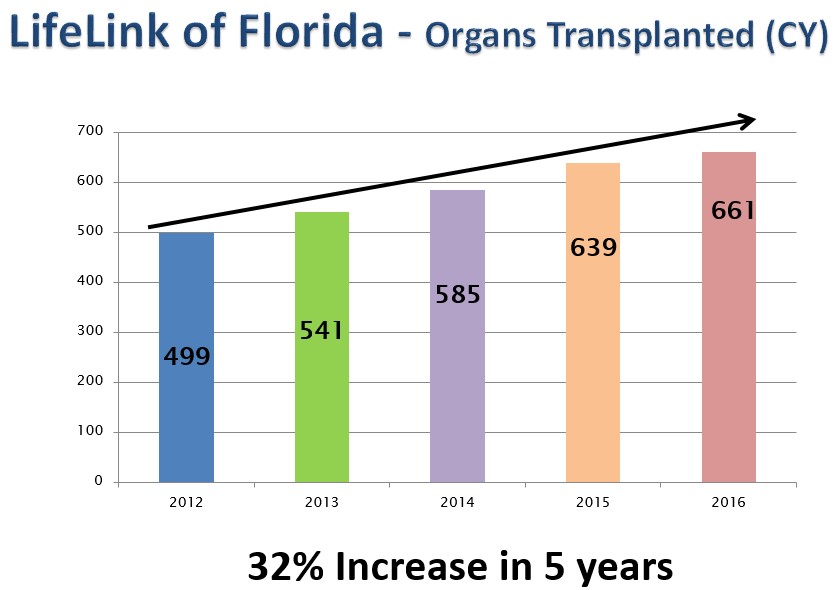A Systems-Based Approach to Increasing Organs Transplanted: One Organ Procurement Organization’s experience
Liz Lehr1, Jean Davis2, Marty Sellers2, Paula Lawrence2.
1LifeLink of Florida, Tampa, FL, United States; 2LifeLink Foundation, Tampa, FL, United States
Introduction: As everywhere, our donor service area does not have enough organ donors to supply the need of those on the waitlist. Moreover, our population is older on average than the rest of the United States, with an inherent increase in eligible donor co-morbidities and decrease in organ quality. Enhanced efforts to improve organ donation are necessary to offset these disadvantages. Therefore, we critically reviewed our processes and made several strategic, system-based changes in our response and philosophy to potential donor referrals. We report herein the improvements seen over the 5 years since implementation.
Methods: A critical review of our processes for referral response, donor management, staff development/education, and hospital outreach was performed in 2012. Responses to referrals were changed and driven by protocol-based algorithms. Hospital development included focused education on clinical triggers and increasing awareness of the potential for donation after circulatory determination of death (DCDD). Active cancer became our only reason for not sending staff for an onsite evaluation, regardless of patient neurologic status. A multitude of group communication pathways were developed to provide platforms for multidisciplinary discussions related to referral evaluation and triage including two Administrator on call evaluations prior to a DCDD rule out and a daily multidisciplinary staff call at 6:45 a.m. The system-based approach continues to evolve according to quality improvement evaluations based on donation data and hospital feedback. Our donation service area (DSA) organ donation and transplantation data were maintained in a prospective database and compared to US (OPTN) data.
Results: From 2012-2016 we experienced a 16% increase in total death referrals (18956 to 22002) and a 51% increase in potential organ donor referrals (2513 to 3796). This led to a 36% increase in organ donors (169 to 230; Figure 1) and a 32% increase in organs transplanted (499 to 661) in our OPO, greater than the 22% and 24.5% increase in US donors (8143 to 9971) organs transplanted (22187 to 27630), respectively. We are currently recovering at a rate of 41.81 donors per million population (230/5.5M). Additionally, expanded criteria donors (ECD) have increased from 23.7% of organ donors to 26.1%.
We attribute this increase in growth to the review and changes initiated beginning in 2012. Our systems-based approach has been associated with significantly more donors and organs transplanted.
Conclusion: Key system improvements, which focus on staff engagement, defined protocols for referral evaluation and management and proactive attitudes and relationships with key stakeholders, have resulted in significant success in an OPO DSA with an increase in organ referrals, organ donors and organs transplanted, well above the national rates.

